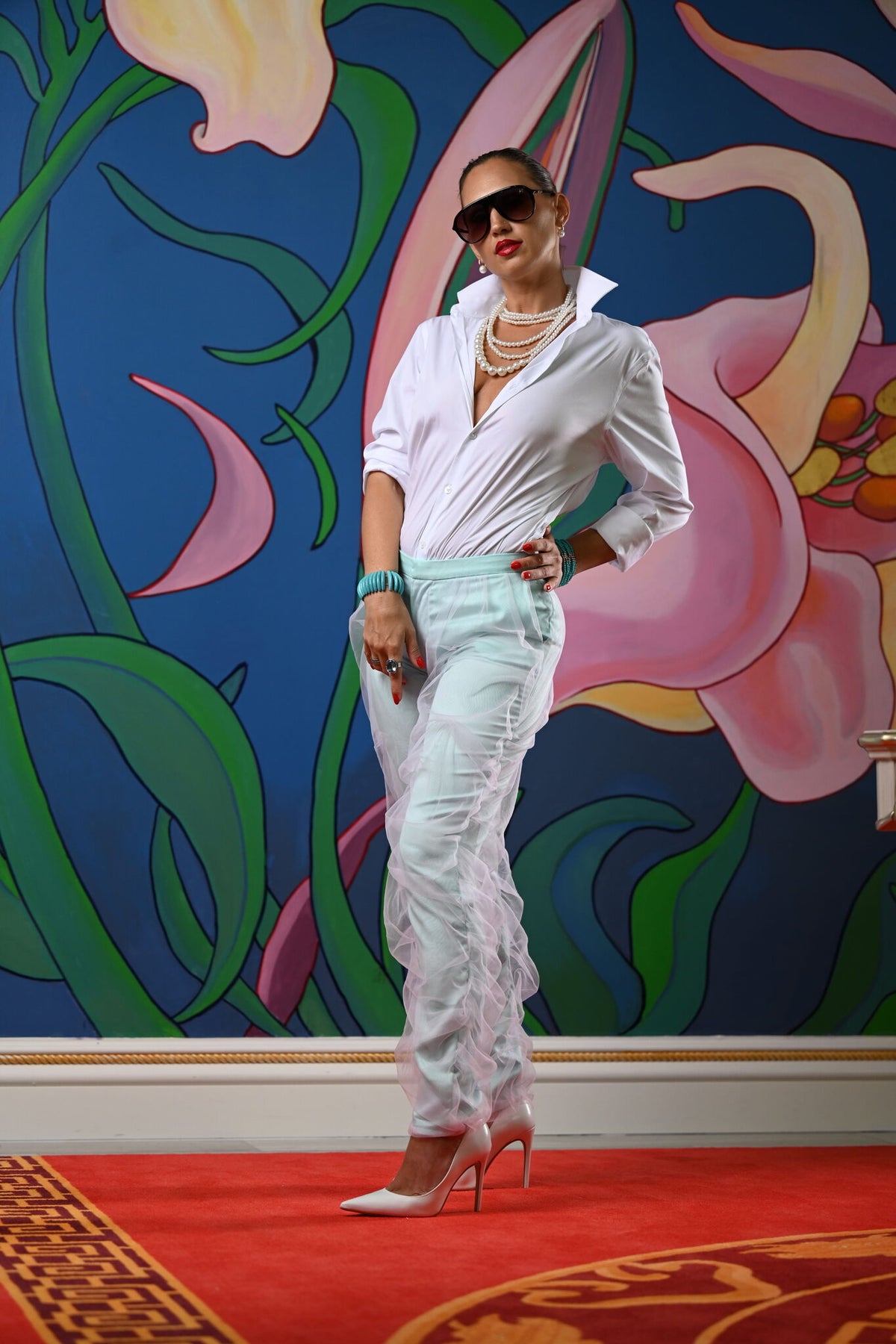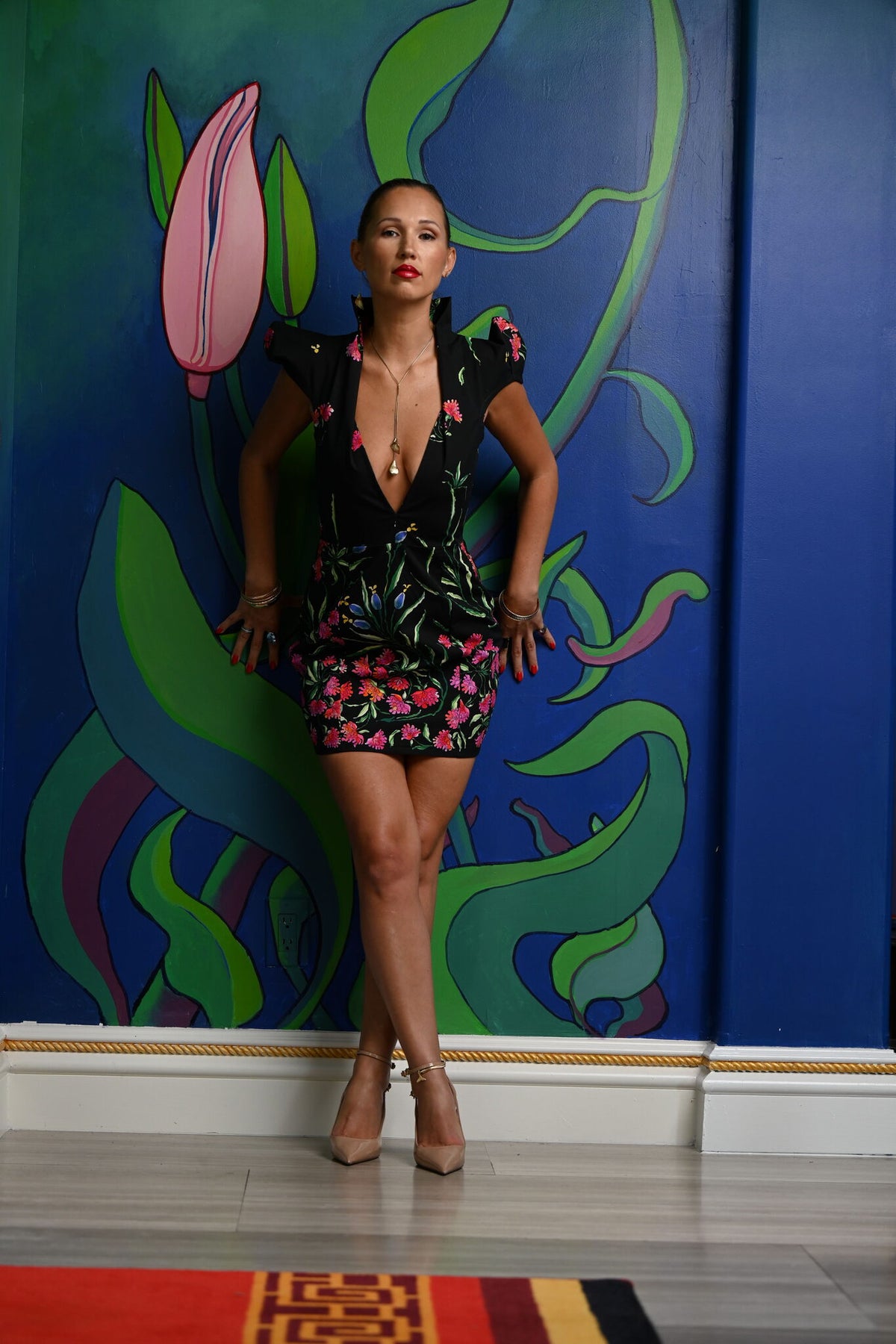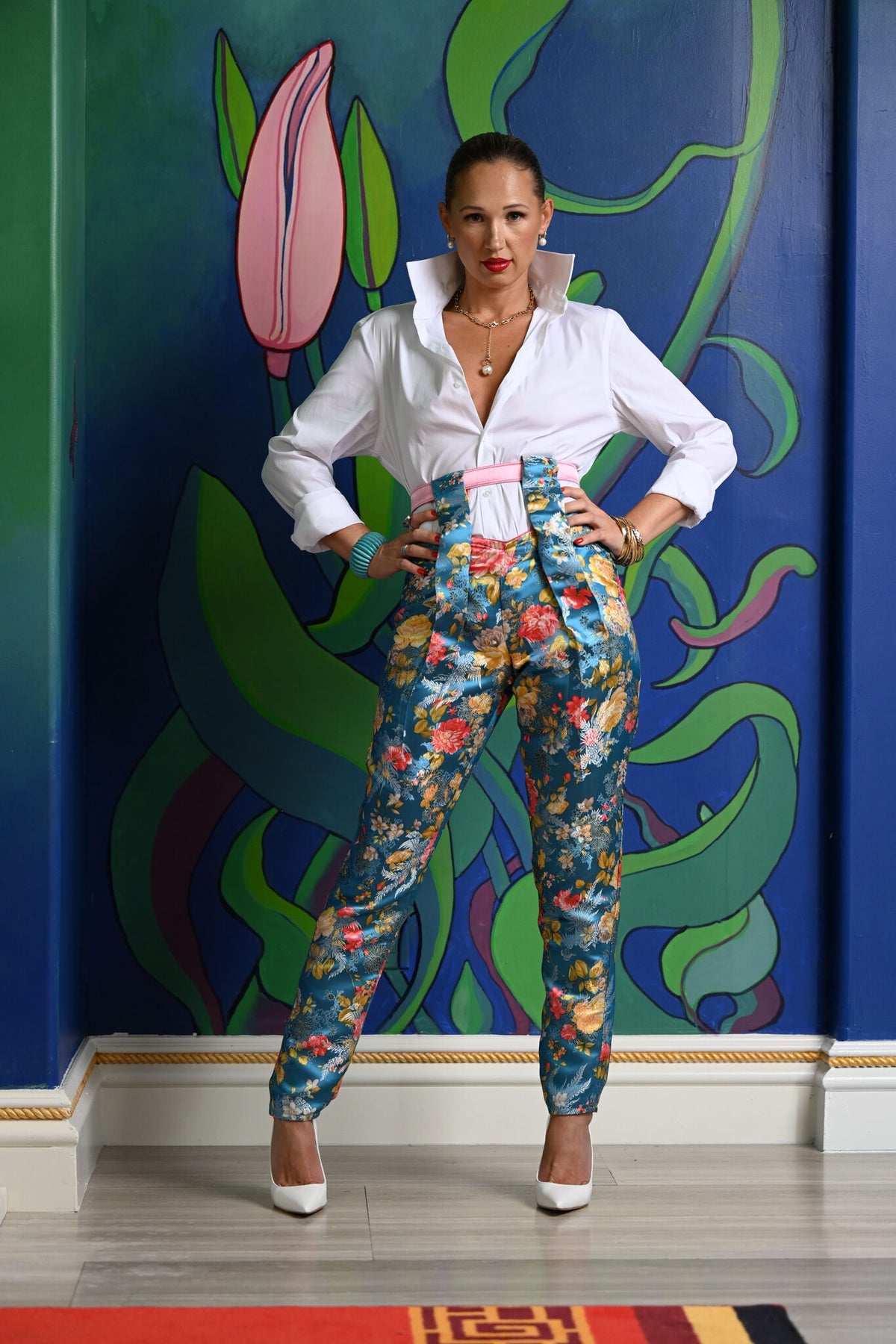The invitation arrives with elegant script announcing a cocktail party, and then you see it: "Cocktail attire requested." Your mind immediately races with questions. What exactly does cocktail attire mean? Is it the same as semi formal? Can you wear that little black dress, or is something else expected? You're not alone in this confusion.
Cocktail attire is one of the most common yet misunderstood dress codes. It strikes a balance between casual elegance and formal sophistication, designed specifically for evening social events where you want to look polished without the full formality of black tie affairs. This guide will demystify cocktail attire, explain exactly what it means, and help you put together the perfect outfit for any cocktail event.
What does cocktail attire mean?

Cocktail attire is a dress code that calls for stylish, elegant clothing appropriate for evening social gatherings and celebrations. The term originated in the 1920s and 1930s when cocktail parties became fashionable social events, requiring attire that was dressy but not as formal as white-tie or black-tie affairs.
The essence of cocktail attire is polished sophistication with a touch of personality. It's more elevated than business casual or smart casual, roughly equivalent to semi formal, but doesn't require the formality of floor-length gowns or tuxedos. Think of it as your chance to dress up and look your absolute best while still being comfortable enough to mingle, sip drinks, and enjoy conversation.
Cocktail attire typically applies to evening events starting at 5 PM or later. The dress code suggests celebration and festivity, inviting guests to put thought and effort into their appearance. When hosts specify cocktail attire, they're setting expectations for an upscale, sophisticated atmosphere where everyone presents themselves elegantly.
Understanding the cocktail dress code
The cocktail dress code occupies a specific space in the formality spectrum. It sits above business attire and smart casual but below black tie and formal dress codes. Understanding where it falls helps you make appropriate choices without overthinking every detail.
Unlike casual dress codes that prioritize comfort and ease, cocktail attire emphasizes presentation and polish. The clothing should look intentional, well-fitted, and special. This isn't your everyday work outfit or weekend casual wear, it's attire that signals you've made an effort for the occasion.
The time of day matters significantly with cocktail attire. While the dress code technically applies to evening events, some daytime occasions like afternoon weddings or garden parties might specify "cocktail attire" or "daytime cocktail." These situations typically allow for lighter colors, fabrics, and slightly less formal choices than traditional evening cocktail attire.
Context also influences appropriate selections. A cocktail party at an art gallery might call for trendier, fashion-forward choices, while a corporate cocktail reception might require more conservative elegance. The venue, host, and occasion all provide clues about the expected level of formality within the cocktail attire framework.
Cocktail attire for women

Women have tremendous flexibility when dressing for cocktail events, with numerous styles and options that meet dress code requirements. The key lies in selecting pieces that project sophistication while reflecting personal style.
Cocktail dresses and dress lengths
The cocktail dress is the cornerstone of women's cocktail attire. These dresses traditionally fall between knee length and midi length, typically hitting anywhere from just above the knee to mid-calf. This length range provides the sweet spot between casual and overly formal.
The classic knee-length cocktail dress remains the most popular and versatile choice. A-line silhouettes, sheath dresses, and fit-and-flare styles all work beautifully. The silhouette should flatter your body type while maintaining sophistication. Avoid anything too tight, too short, or too revealing, as cocktail attire emphasizes elegant restraint.
Midi-length dresses have become increasingly popular for cocktail events and offer a contemporary, sophisticated alternative. These dresses fall between knee and ankle, providing more coverage while still feeling dressy and appropriate. Tea-length dresses, which typically end mid-calf, also fit comfortably within cocktail attire guidelines.
While floor-length gowns typically exceed cocktail attire formality, certain streamlined maxi dresses in cocktail-appropriate fabrics can work, especially for formal cocktail events. However, the traditional knee to midi length remains the safest and most appropriate choice.
Fabric choices and colors
Fabric selection significantly impacts whether an outfit reads as cocktail-appropriate. Luxurious materials like silk, satin, chiffon, lace, velvet, and crepe convey the elegance cocktail attire requires. These fabrics have beautiful drape, catch light attractively, and feel special to wear.
Avoid casual fabrics like cotton jersey, t-shirt materials, or anything overly stretchy. Even if the dress style looks appropriate, casual fabrics will undermine the cocktail aesthetic. The material should feel substantial and refined.
For evening cocktail events, rich colors work beautifully. Jewel tones like emerald, sapphire, and ruby make stunning choices. Classic black remains timeless and elegant, perfect when you want a sophisticated, failsafe option. Metallics like gold, silver, and bronze add festive glamour appropriate for celebratory occasions.
Don't shy away from color. Deep reds, elegant navies, rich purples, and sophisticated burgundies all work wonderfully for cocktail events. For spring and summer evening events, you might incorporate lighter jewel tones or vibrant colors, though the richness should still convey evening elegance.
Alternative options beyond dresses
If dresses aren't your preference, elegant jumpsuits have become widely accepted cocktail attire. Choose styles in luxurious fabrics with sophisticated silhouettes. Wide-leg jumpsuits in silk or satin can look just as elegant as traditional cocktail dresses when styled correctly.
Dressy separates offer another alternative. A silk or satin blouse paired with tailored dress pants or a sophisticated skirt can achieve cocktail-appropriate elegance. The key is ensuring all pieces read as dressy and refined rather than business or casual wear.
Dressy pantsuits in cocktail-appropriate fabrics with feminine styling details can also work, particularly for less traditional cocktail events or when personal style leans toward tailored elegance over dresses.
Shoes and accessories
Footwear should be elegant and dressy. Heeled shoes are traditional for cocktail attire, whether classic pumps, strappy sandals, or sophisticated block heels. Metallic shoes in gold or silver add glamour, while neutral colors like black, nude, or navy offer versatility.
If you prefer flats, choose sophisticated options like embellished flats, sleek pointed-toe styles, or elegant ballet flats in dressy materials. The key is ensuring they look intentionally dressy rather than casual.
Accessories elevate your cocktail look and provide opportunities for personal expression. Statement jewelry can add personality, whether bold earrings, an eye-catching necklace, or stacked bracelets. However, avoid wearing multiple statement pieces simultaneously, choose one focal point and keep other accessories understated.
A clutch or small elegant handbag completes the look. Choose styles in metallics, satin, or other dressy materials that coordinate with your outfit. Your bag should be small enough to carry comfortably while mingling.
Cocktail attire for men

Men's cocktail attire follows clearer guidelines than some other dress codes, though room for personal style exists within established parameters. The goal is looking sharp and polished without reaching tuxedo formality.
Suits and sport coats
A well-fitted suit forms the foundation of men's cocktail attire. Dark colors work best for evening cocktail events, with navy, charcoal gray, and black offering the most versatile and appropriate options. These colors convey sophistication and work across various cocktail occasions.
The suit should be properly tailored with appropriate shoulder fit, sleeves ending at the wrist bone, and trousers with a slight break at the shoes. Fit matters more than price, an affordable suit that fits perfectly looks better than an expensive suit with poor fit.
For less formal cocktail events or warmer climates, a sport coat or blazer paired with dress trousers offers a stylish alternative. The jacket should coordinate with but not match the trousers exactly. Navy blazers with gray trousers or gray jackets with black trousers create sophisticated combinations.
Shirt and tie combinations
A crisp dress shirt provides the foundation for your cocktail attire. White remains the classic, failsafe choice that works for any cocktail event. Light blue offers a subtle variation while maintaining appropriate formality. For evening events, you might consider shirts in other sophisticated colors, though white and light blue remain the most traditional.
Whether to wear a tie depends on the specific event and current style trends. Traditionally, cocktail attire includes a tie, and wearing one remains the safest choice for formal cocktail events. Choose silk ties in solid colors, subtle patterns, or classic designs that coordinate with your suit.
However, cocktail attire has become more flexible, and many modern cocktail events accept well-dressed men without ties, especially in warmer climates or less traditional settings. If you skip the tie, ensure your shirt is impeccably pressed and your overall appearance is polished enough to maintain appropriate formality.
For a modern twist, consider patterned dress shirts in subtle designs when wearing a suit without a tie. The pattern adds visual interest while maintaining sophistication.
Footwear and finishing details
Quality leather dress shoes in black or brown complete your cocktail attire. Oxfords and derbies represent classic, appropriate choices. Monk straps offer a stylish alternative. Loafers can work for less formal cocktail events but should be dressy leather loafers rather than casual styles.
Shoes must be clean, polished, and in excellent condition. Scuffed or worn footwear undermines an otherwise polished appearance. Your belt should match your shoes in both color and leather type.
Wear dress socks that coordinate with your trousers, ensuring they're long enough that no skin shows when you sit. Dark socks in black, navy, or gray work for most cocktail occasions.
Keep accessories minimal and refined. A quality watch adds sophistication without overwhelming the outfit. If you choose to wear cufflinks with French cuff shirts, select simple, classic styles. A pocket square can add personality and polish, folded neatly rather than puffed dramatically.
Common cocktail attire occasions
Understanding typical events that call for cocktail attire helps you recognize when this dress code is appropriate and how to interpret it across different contexts.
Wedding receptions and celebrations
Weddings frequently specify cocktail attire, particularly for evening receptions. This dress code indicates the hosts want guests to dress elegantly without requiring formal gowns and tuxedos. The celebration atmosphere welcomes stylish, festive clothing choices.
Women should avoid wearing white, ivory, cream, or anything that might photograph as white, reserving these colors for the bride. Choose colors and styles that feel celebratory and appropriate for the wedding's setting and season.
Men typically wear dark suits with ties for evening wedding cocktail receptions, ensuring their appearance shows respect for the occasion while matching the festive atmosphere.
Engagement parties, rehearsal dinners, and anniversary celebrations might also specify cocktail attire, indicating these are special occasions worthy of elegant presentation.
Cocktail parties and social gatherings
The namesake event for cocktail attire, cocktail parties range from intimate gatherings to large social mixers. These events center on conversation, networking, and socializing, typically featuring passed appetizers and drinks rather than seated dinners.
Cocktail parties at galleries, museums, restaurants, or private clubs call for polished elegance. The venue often signals the expected formality level within the cocktail attire framework. High-end venues suggest more sophisticated choices, while casual venues might allow slightly more relaxed interpretations.
Holiday parties, fundraising events, and charity galas frequently adopt cocktail attire, creating festive atmospheres where guests can dress up and enjoy the celebration.
Professional and corporate events
Company holiday parties, award ceremonies, client appreciation events, and industry networking functions often specify cocktail attire. These occasions blend professional representation with social celebration.
For professional cocktail events, lean toward more conservative choices. Women might select sophisticated knee-length dresses or elegant jumpsuits in refined colors. Men should wear well-tailored dark suits with ties. The goal is looking polished and professional while acknowledging the celebratory nature of the gathering.
What to avoid with cocktail attire
Understanding what falls outside cocktail attire parameters helps you avoid choices that might seem inappropriate or make you feel uncomfortable at the event.
Never wear jeans, t-shirts, sneakers, shorts, or casual sandals to cocktail events. These items are fundamentally casual and don't align with cocktail dress code standards regardless of their quality or price point.
Avoid overly casual fabrics like denim, cotton jersey, or athletic materials. Even if styled in dressy silhouettes, these fabrics read as too casual for cocktail occasions.
Don't dress too provocatively. While cocktail attire welcomes fashionable, stylish choices, extremely low necklines, very short hemlines, sheer fabrics without appropriate undergarments, or anything too revealing contradicts the sophisticated elegance cocktail events require.
Avoid overdressing as well. Floor-length ball gowns and tuxedos typically prove too formal for cocktail attire unless the invitation specifically mentions "formal cocktail" or "black tie optional." Matching the appropriate formality level helps you feel comfortable and confident.
Skip overly loud patterns, costume-like ensembles, or anything attention-seeking in inappropriate ways. Cocktail attire should be stylish and sophisticated, allowing you to fit in comfortably while looking your best.
Seasonal cocktail attire considerations

Adapting your cocktail attire to different seasons demonstrates good judgment while maintaining appropriate formality and style.
Spring and summer cocktail style
Warmer months allow for lighter colors and fabrics while maintaining cocktail elegance. Women can incorporate floral prints, pastel colors, bright jewel tones, and lighter fabrics like silk chiffon or lightweight satin. These choices feel seasonally appropriate while remaining dressy enough for cocktail events.
For outdoor evening cocktail events in warm weather, consider the venue conditions. Grass-friendly wedges or block heels work better than stilettos for garden or lawn settings. A light wrap or shawl provides coverage for air-conditioned spaces without adding too much warmth.
Men might choose lighter-weight suit fabrics like tropical wool or cotton blends for warm-weather cocktail events. Lighter suit colors can work for daytime cocktail events, though evening occasions typically still call for darker colors. Lighter shirt colors and seasonal ties in coordinating hues complete the look.
Fall and winter cocktail attire
Cooler seasons welcome richer colors and heavier fabrics. Women can embrace velvet dresses, heavier silks, and fabrics with more substance. Deep jewel tones, burgundy, forest green, navy, and classic black all suit fall and winter cocktail events beautifully.
Closed-toe shoes become more seasonally appropriate, and tights or stockings can be added for warmth in appropriate nude or black shades. Elegant wraps, pashminas, or dressy jackets provide warmth when moving between outdoor and indoor spaces.
Men should select wool or wool-blend suits in traditional colors. Darker tie colors and textures like silk knits or woven patterns add seasonal interest. Don't forget a quality overcoat for transitioning between locations while maintaining polished presentation.
Tips for nailing cocktail attire
Several practical strategies help ensure your cocktail outfit hits the mark every time, helping you feel confident and appropriately dressed.
When uncertain about formality levels, slightly overdressing proves safer than underdressing. You can always make small adjustments like removing a jacket or jewelry if you feel slightly too formal, but you can't add formality if underdressed.
Invest in proper fit. Even moderately priced clothing looks excellent when tailored to your body, while expensive pieces look poor when they don't fit correctly. Find a reliable tailor for adjustments that make your cocktail attire look custom-made.
Consider the complete picture. Your outfit, accessories, shoes, grooming, and overall presentation should all align with cocktail elegance. One casual element can undermine an otherwise appropriate look.
Pay attention to event details provided in the invitation. Venue information, time, and any additional descriptors like "festive cocktail" or "business cocktail" provide valuable clues about appropriate choices within the cocktail attire framework.
When genuinely uncertain, don't hesitate to contact the host or event organizer for clarification. Most hosts appreciate questions and want guests to feel comfortable and appropriately dressed.





